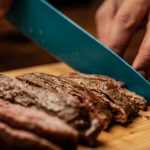Embarking on a keto diet journey brings with it a flurry of questions, especially about what to eat and how much. Among the most common inquiries is the amount of protein one can consume while sticking to this low-carb, high-fat lifestyle. It’s a valid concern, given protein’s crucial role in everything from muscle repair to satiety.
Navigating the keto diet doesn’t have to feel like a puzzle, especially when it comes to protein intake. Understanding the balance between maintaining ketosis and ensuring adequate protein consumption is key. This article aims to shed light on this balance, offering insights into how much protein is just right for someone living the keto life. Whether you’re a seasoned keto enthusiast or just starting, getting your protein intake on point is essential for your diet’s success.
Understanding the Keto Diet
The keto diet revolves around high fat, moderate protein, and very low carbohydrate intake, aiming to enter a state of ketosis where the body uses fat as its primary fuel source instead of carbohydrates. This section delves deeper into the role of protein in the keto diet and the optimal macronutrient breakdown to achieve ketosis while ensuring the body receives essential nutrients for overall health.
The Role of Protein in Keto
Protein plays a pivotal role in the keto diet, contributing to muscle repair and growth, satiation, and overall metabolic health. Unlike carbs, which the body restricts on a keto diet, protein intake should be adequate but not excessive. Consuming too much protein can potentially shift the body out of ketosis due to the conversion of excess protein into glucose, a process known as gluconeogenesis. Therefore, it’s crucial to find a balance that supports the body’s needs without compromising the state of ketosis.
The Macronutrient Breakdown
For someone following a keto diet, the macronutrient breakdown typically looks like this:
- 70-80% of calories from fats: Avocados, coconut oil, butter, and cheese are examples of high-fat foods that align with keto principles.
- 10-20% of calories from proteins: Examples include meat, fish, eggs, and some dairy products. The exact percentage can vary based on individual needs and goals.
- 5-10% of calories from carbohydrates: This usually limits carb intake to 20-50 grams per day to maintain ketosis.
This macronutrient distribution helps individuals stay within the metabolic state of ketosis, optimizing fat burning and minimizing glucose reliance. Adjustments may be necessary based on personal activity levels, metabolic rate, and individual health goals to ensure the diet supports overall well-being while adhering to keto guidelines.
Determining Your Protein Intake on Keto
In the keto diet, finding the right amount of protein is crucial for maintaining ketosis while ensuring the body gets enough nutrients for muscle repair, satiety, and metabolic health. This section delves into how individuals can calculate their protein needs and explores various factors that may affect these requirements.
Calculating Your Protein Needs
Calculating protein needs on the keto diet involves understanding one’s body composition and activity level. Generally, individuals should aim for a protein intake that makes up about 20% of their daily caloric intake. This percentage translates into roughly 0.8 to 1.5 grams of protein per kilogram of body weight, depending on one’s physical activity level. For example, a sedentary person weighing 70 kilograms might aim for 56 grams of protein a day, while someone more active could require up to 105 grams.
It’s important to adjust these numbers based on individual goals, such as weight loss or muscle gain. People looking to lose weight might lean towards the lower end of the protein range to ensure a calorie deficit, while those aiming to build muscle might increase their protein intake, ensuring they’re still within the keto macronutrient ratios.
Factors Affecting Protein Requirements
Several factors can influence how much protein someone might need while following a keto diet:
- Activity Level: Active individuals, especially those engaged in strength training or endurance sports, require more protein than sedentary individuals. This helps repair and build muscle tissue.
- Age: Older adults might need higher protein levels to combat muscle loss associated with aging.
- Muscle Mass: Those with more muscle mass need more protein to maintain and build muscle.
- Health Goals: Weight loss goals might necessitate a different protein intake than goals focused on bulking up or muscle maintenance.
- Metabolic Health: Individuals with insulin resistance or type 2 diabetes might need to adjust their protein intake to manage blood glucose levels effectively.
By considering these factors, individuals can tailor their protein intake to suit their personal health goals and activity levels, ensuring they stay in ketosis while supporting their body’s needs.
The Impact of Protein on Ketosis
Continuing from the importance of finding the right balance of protein intake on a keto diet, this section delves into how protein consumption affects ketosis. Understanding the impact of protein on blood sugar, insulin levels, and the process of gluconeogenesis is crucial for managing and maintaining ketosis effectively.
How Protein Affects Blood Sugar and Insulin
Protein, while essential for muscle repair and growth, can also influence blood sugar and insulin levels, albeit to a lesser extent than carbohydrates. When protein is consumed, it can lead to a moderate increase in insulin. However, this does not necessarily disrupt ketosis because the accompanying rise in blood sugar levels is usually minimal. In contrast to carbohydrates, which can cause significant spikes in blood sugar and insulin, protein’s effect is more subdued, ensuring that it’s possible to maintain a state of ketosis. Understanding this interaction helps individuals on a keto diet make informed choices about their protein consumption, balancing their intake to support metabolic health while staying in ketosis.
Gluconeogenesis and Ketosis
Gluconeogenesis is a metabolic process where the liver produces glucose from non-carbohydrate sources, including protein. This process is often cited as a concern for those following a keto diet, as it’s believed excessive protein intake could lead to increased glucose production, potentially interfering with ketosis. However, gluconeogenesis is a demand-driven process, not solely dependent on the amount of protein consumed. It only produces glucose when the body needs it, such as when glucose levels are low, ensuring the body’s energy needs are met without disrupting ketosis. Therefore, while it’s essential to monitor protein intake on a keto diet, the body regulates this process to support energy demands while allowing individuals to remain in a state of ketosis. This regulation underscores the body’s adaptive mechanisms, enabling a keto diet to be protein-sufficient and still effectively promote fat burning and weight loss.
Sources of Protein Suitable for Keto
After understanding how protein intake affects ketosis and identifying personal nutritional needs, it’s important to select sources of protein that align with the ketogenic diet’s macronutrient ratios. Protein plays a crucial role in muscle repair, satiety, and overall metabolic health without compromising the state of ketosis when chosen wisely. Below are optimal animal-based and plant-based protein choices for those following a keto diet.
Animal-Based Protein Options
Animal-based proteins offer high-quality, nutrient-dense options that are very compatible with the keto diet due to their low carbohydrate content and high fat and protein ratios. These foods not only support muscle maintenance and repair but also provide essential vitamins and minerals for overall health.
- Meat: Beef, pork, lamb, and venison are excellent sources, with grass-fed varieties offering higher omega-3 fatty acids.
- Poultry: Chicken, turkey, and duck can be included, with skin-on options providing extra fat for ketosis.
- Fish: Fatty fish like salmon, mackerel, and sardines are preferred for their high omega-3 content and protein.
- Seafood: Shrimp, crab, and lobster, although lower in fat, are beneficial for their protein and can be paired with high-fat sauces.
- Eggs: Highly versatile, eggs are a perfect keto protein with the added benefit of containing vitamins D and B.
- Dairy: High-fat cheeses, butter, and cream are not only good sources of protein but also enhance fat intake for ketosis.
Plant-Based Protein Alternatives
For those on a ketogenic diet who prefer or require plant-based sources of protein, there are several options that fit the bill. These sources are particularly useful for vegetarians or vegans on a keto diet, providing essential proteins while keeping carbohydrate intake in check.
- Tofu and Tempeh: Made from soybeans, these provide a substantial amount of protein with minimal carbs, suitable for various recipes.
- Seitan: Although derived from wheat, seitan is low in carbs and high in protein, making it a viable option for keto vegetarians.
- Nutritional Yeast: This is a cheese-flavored powder that’s rich in protein and B vitamins, adding a nutritious boost to meals.
- Nuts and Seeds: Almonds, chia seeds, and flaxseeds are examples of high-protein, keto-friendly snacks that also offer healthy fats.
- Low-Carb Protein Powders: Certain plant-based protein powders, such as pea or hemp protein, can supplement protein intake without added sugars.
Selecting the right proteins for a keto diet involves focusing on foods that provide essential nutrients, support health goals, and maintain the delicate balance of ketosis. By incorporating a variety of these animal-based and plant-based proteins, individuals can enjoy a nutritious, keto-friendly diet that supports their lifestyle and nutritional needs.
Balancing Your Keto Diet for Optimal Results
Adopting a ketogenic diet involves more than just focusing on high-fat foods and limiting carbohydrates. A critical part of achieving success on this diet is understanding and managing protein intake effectively. This ensures not only the maintenance of muscle mass but also the promotion of optimal health while adhering to keto principles. The following sections delve into how individuals can track and adjust their protein intake for muscle gain or fat loss, contributing to a well-rounded and effective keto diet plan.
Tracking Your Protein Intake
Monitoring protein consumption is essential for anyone following a keto diet. It’s not just about hitting a specific gram target; it’s about ensuring these grams come from high-quality sources that support ketosis. Utilizing apps or food diaries helps individuals keep a close eye on daily protein intake, making it easier to stay within the 20% daily calorie guideline from protein. Additionally, paying attention to body composition changes and how one feels can provide insights into whether protein intake is aligned with ketosis and overall health goals. When selecting protein sources, prioritizing those previously mentioned, like meat, fish, eggs, and select plant-based options, ensures nutrient density and diet compatibility.
Adjusting Your Diet for Muscle Gain or Fat Loss
The flexibility of the keto diet allows for adjustments tailored to individual goals, whether it’s muscle gain or fat loss. For muscle building, slightly increasing protein intake, within the context of staying in ketosis, can be beneficial. Incorporating resistance training alongside consuming protein-rich foods aids in muscle synthesis without compromising ketosis. Individuals aiming for fat loss might consider moderating their protein intake to the lower end of their target range to ensure fat becomes the primary energy source. However, it’s crucial to maintain enough protein in the diet to preserve muscle mass during weight loss. Adjustments to protein intake should always keep keto principles in mind, focusing on maintaining nutritional ketosis and overall well-being.
Conclusion
Finding the right balance of protein on a keto diet is key to achieving your health and fitness goals. By understanding your body’s needs and adjusting your intake accordingly, you can maintain ketosis while supporting muscle repair and metabolic health. Remember, it’s not just about the quantity but also the quality of protein that matters. So, choose your sources wisely and don’t hesitate to tweak your diet as your needs change. Whether you’re looking to build muscle or shed fat, a thoughtful approach to protein can help you get there while keeping your body in its optimal state.
Barbara has lost 100 pounds following the Modified Keto Diet. She started following the Keto Diet in July of 2019. She enjoyed the meals and the healthy lifestyle so much that she studied under the Speed Keto creator, Dr. Harlan Kilstein, and became a Certified Keto Coach in July 2021. After her husband was diagnosed as diabetic, she became a Certified Diabetic Coach in 2022. She coaches clients both in individual and group settings. Throughout her journey with the Modified Keto Diet, her A1C dropped from 6.5 to 4.9. She continues to enjoy healthy eating and helps others to do the same.







